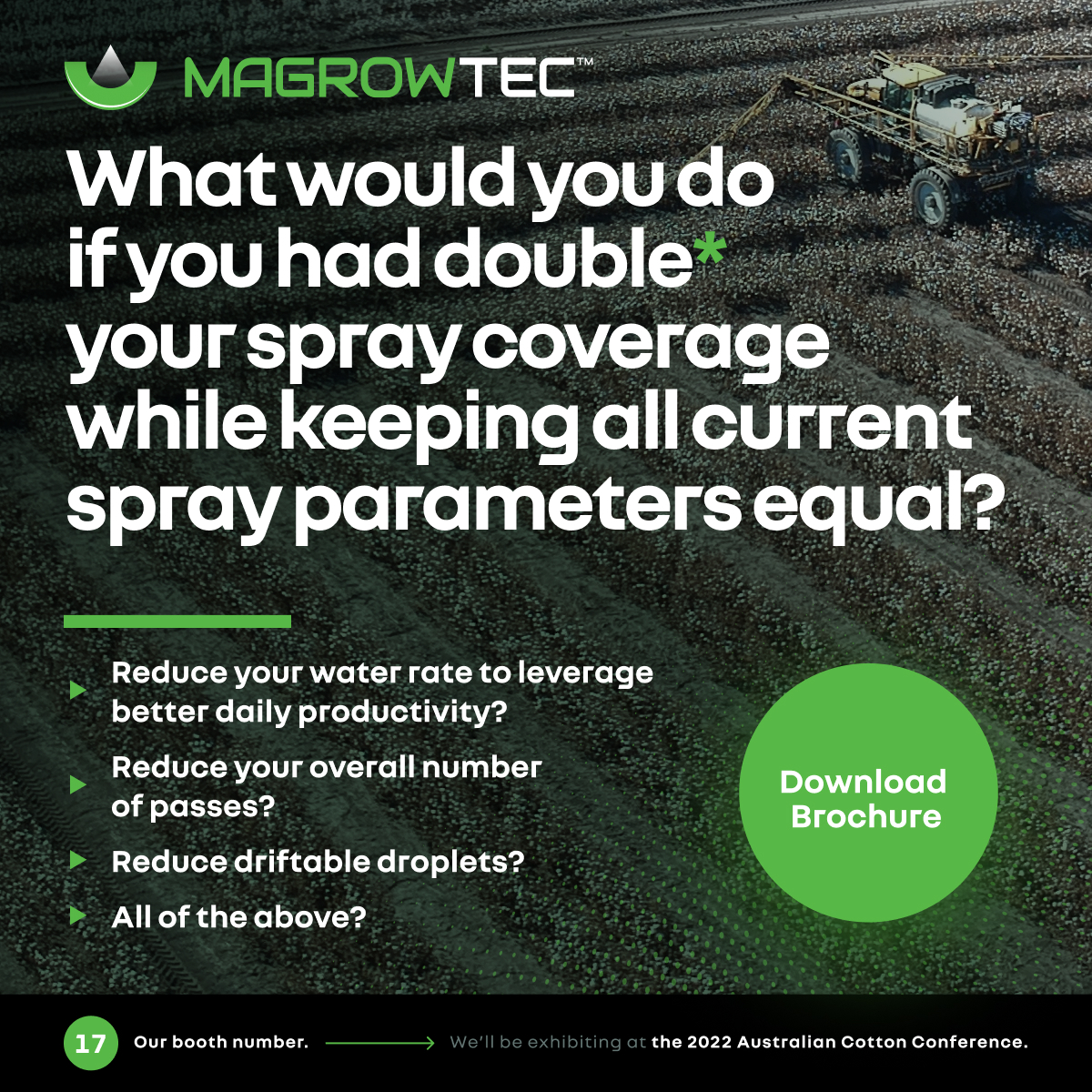The Food and Agriculture Organization estimates that between 20% and 40% of the crops grown around the world are lost each year due to plant pests and diseases. While growers combat pests by spraying herbicide, fungicide, and insecticide, one of the biggest challenges with conventional spraying methods is controlling spray drift so it doesn’t move beyond its intended target.
An innovative concept developed by Ted Lenhardt, a Florida-based inventor with more than 40 years of experience in agriculture, would provide a solution. However, using a fine droplet size while trying to maximize drift control is a key challenge for conventional drift-reduction technologies because fine droplets take longer to fall out of the air and are harder to control.
“From Ted’s extensive research, he knew that existing pesticide spraying technologies for crops were a compromise between cover-age and drift control,” says Gary Wickham, a founding member and CEO of MagGrow. “Approximately 70% of what is sprayed during conventional spraying is wasted.” Intrigued by his work, Wickham, along with David Moore, decided to invest in developing Lenhardt’s basic idea.
“Using a fine droplet size provides more uniform coverage,” explains Wickham. “Besides using less inputs and water, you generate less waste by minimizing pesticide runoff to the soil and water.”
However, using a fine droplet size while trying to maximize drift control is a key challenge for conventional drift-reduction technologies because fine droplets take longer to fall out of the air and are harder to control.
This is where the MagGrow spraying technology steps in. It uses patented and proprietary technology for droplet formation that yields superior spray-drift reduction and spray-coverage performance.
“Our customers are seeing two core benefits: 70% drift reduction and at least 20% to 40% improved coverage, depending on the crop, along with significant reduction in water usage (up to 50%),” says Wickham.
MagGrow consists of manifolds and rods that utilize permanent rare earth magnets. This helps alter the fluid properties, which, impacts the spray profile characteristics and adhesion properties. The system has no moving parts, is easy to install and maintain, and can be fitted to a new or existing crop sprayer.
A typical 80-foot sprayer requires a minimum of six main magnet housings, one boom arm magnet housing per boom section, and one nozzle adapter per nozzle. The cost is around $30,000 with a return on investment of about six to 12 months.
xx Successful Farming at Agriculture.com | July 2018




